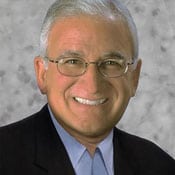Dunkin’ Donuts 6 Brand Building Principles: John Costello
California has long been waiting for Dunkin’ Donuts to open stores in that state as evidenced by the 350 people or so who camped out to be among the first to get into the new restaurant in Santa Monica.
That kind of brand love is hard to come by. It takes focus, change and transformation, even for a brand like Dunkin’ Donuts. It is 65 years young, operating 19,000 restaurants in 60 countries.
John Costello, president, global marketing and innovation, says that despite all the change—omni-channel, mobile, digital, social, technology—the fundamental principals of building a brand and driving sales hasn’t changed. He operates under six core principles.
1. Confront reality
“Hope is not a strategy,” he said at ad:tech New York. “How do you turn that spotlight back on yourself? Ask yourself what’s working, what’s not and how do I change.”
He cited Arby’s and Domino’s as two brands that changed with the times and consumer behaviors to be more successful. One seminal moment for Dunkin’ in confronting reality was understanding that beverages make up 60% of its business and the bakery less that 20%. It took that reality and used it to maintain growth by focusing on the strategy of “coffee and more.”
And even though traditional marketing is successful for Dunkin’, the brand looked at the role of technology, specifically mobile.
“Traditional marketing continues to work very well for Dunkin,” Costello says. “If I put a picture of something up in a restaurant, I sell more. If I take the picture down, I sell less. On the other hand is the proliferation of mobile. We’re a company where traditional marketing—TV, out-of-home and in-store POP—is very effective but we made the decision to go deep on mobile. It took some real courage on the organizations part where traditional advertising works very well.
The DD Perks, loyalty program has 3+ million members and more than 13 million downloads of the app.
2. Differentiate or Die
“Brand differentiation may be the biggest separators of winners and losers,” Costello said. “Strong brands have a clear point of differentiation and brand purpose. Our point of differentiation is, we’re here to help everyday folks to get running in the morning and keep running all day long. Everything we do from the store environment to product reflects that.” (Thus, it’s tag line, “America Runs on Dunkin’.”)
“Everything that touches the brand defines your brand whether you want it to or not,” he said. “Today, the conversation about you on social may influence your brand more than your ads and the in-store experience can redefine your brand.”
3. Be agile
“Consumers expect brands to be listening,” he says.
Dunkin’s uses storytelling, not selling, to help people understand why they should choose the Dunkin’ brand. As an example, the launch of the #mydunkincoffee campaign changed how it engaged with its consumers. It scoured social posts, tracked down the posters and converted those posts into advertising.
It was agile in its app development and updates. “Mobile is devouring the world,” he says. “It’s become an entire ecosystem. Have we all adapted? Perhaps not. What we found it that it’s easy to get caught up in the features and benefits of mobile and forget about the consumer. We listened to consumers and offered what they want. A store locator was a key feature. It isn’t the sexist thing in the world, but it’s what our customers wanted.”
Dunkin’ Donuts offers it app with dual languages and the payment options customers asked for.
“Current customers can be one of the most powerful marketing tools,” Costello says.
In August, Dunkin’ Donuts arranged to have football star Ron Gronkowski as the voice for Waze, the crowd-sourced traffic and navigation app, to tell users where the nearest DD location is.
4. Innovate
“Don’t be afraid to take risks,” he says. “Create an environment where your team isn’t afraid to try new things. We tried 40 new products and used social to launch new products in new and unexpected ways to engage fans.”
It took a chance when marketing iced coffee and decided to use social and mobile rather than start with TV. It partnered with New England Patriot’s tight end Gronkowski and Boston Red Sox slugger David Ortiz to release a song on video extolling their love for iced coffee—this one, in Spanish. Watch the video:
“We let two iconic athletes who turned out to be pretty good dancers and singers to get the point across about the love of coffee and it exploded on social,” he says. “That would have never worked with a 30-second spot. We knew it might not work, but guess work, it was a lot of fun and the iced-coffee business is booming.”
5. Leverage Big Data
“It’s a tool, but not a strategy,” he says. “It should supplement your judgment, not replace it.
In the last five years DD has built capabilities that didn’t exist five years ago, guided by a few principles.
- What’s important and what’s not.
- Asking the right questions; what’s most important and then assemble the data
- Ensure that you protects consumer’s privacy.
“What we’re finding, as consumers get more and more sophisticated, is that privacy is going to become more important,” he says. “Consumers own the data and I think we’ll be moving to an opt-in world.”
6. Build a great team
“Are you surrounding yourself with people who are smarter and better than yourself?” he asks. “Great people accomplish great things,” Costello says.

































